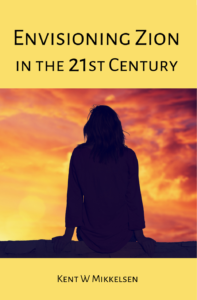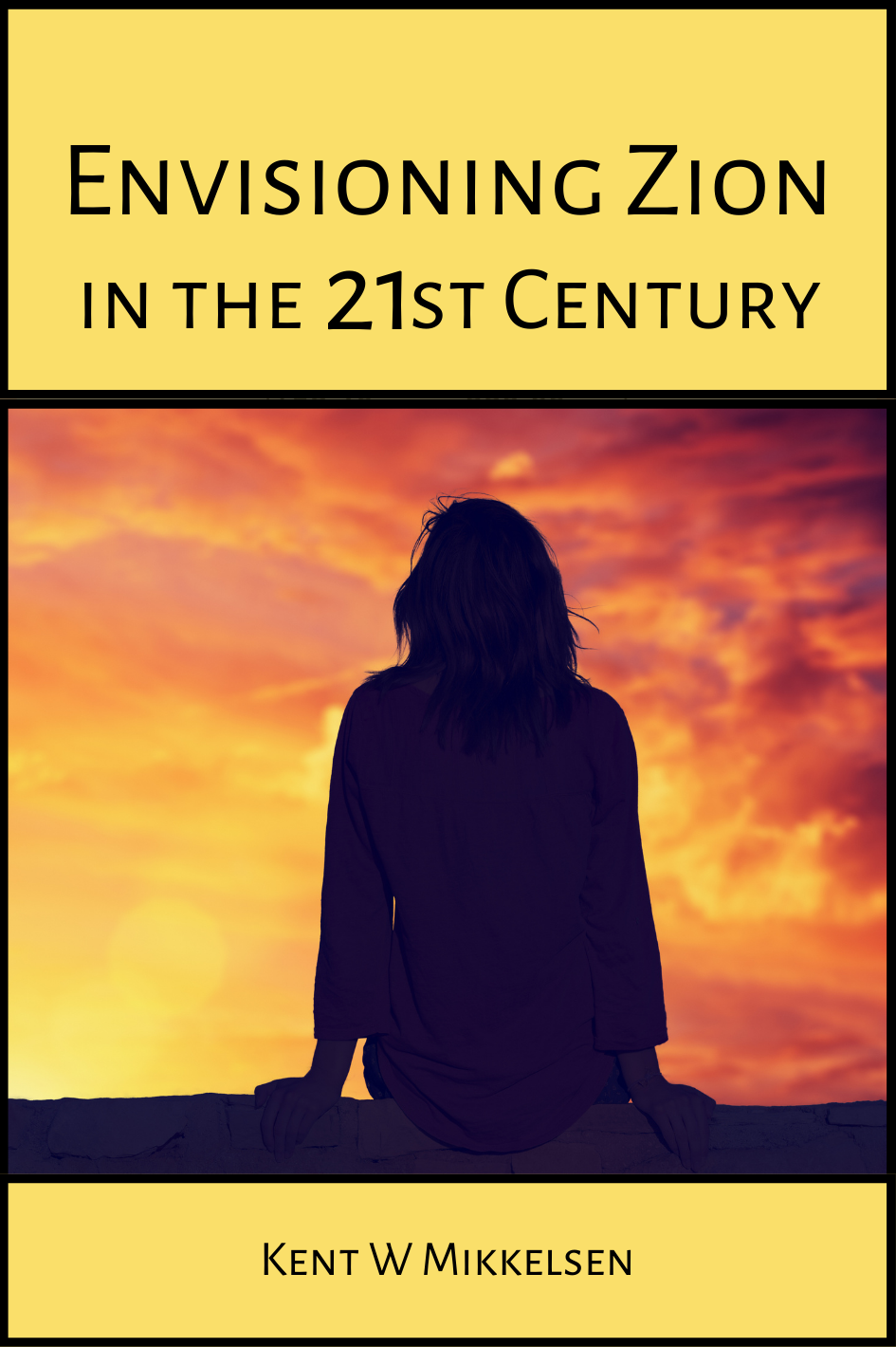What’s in the Book?

Chapter 1
Introduction
Establishing Zion was and is a central mission of The Church of Jesus Christ of Latter-day Saints. Although attempts to establish Zion in the 1830s were unsuccessful, Latter-day Saints firmly believe that Zion will be built before the Second Coming of Christ. Having a vision of how Zion would operate can inspire our efforts to prepare for it. The chapter explains why a modern Zion would likely differ in some ways from the Zion that was attempted in the 1830s. It then lays out an overview of the economic system of “Zion 21.0,” a Zion society that could be established in the twenty-first century.
Chapter 2
A Zion People
What are the attributes of a righteous Zion people particularly relevant to economic relations in Zion? They include charity, social behavior, prosperity, and work. Consecration, stewardship, and equality are central principles. Equality can only be achieved through a systematic approach.
Chapter 3
Social and Economic Environment
This chapter begins to separate the vision of Zion 21.0 from common conceptions of Zion based on the 1830s experience. First, members of Zion 21.0 would live among non-Zion people in multiple communities, rather than as a single, isolated group. Zion members would not be the only local residents and need not even be a majority. Amish and Jewish groupings provide comparisons. Second, Zion 21.0 would be a small part of a larger economic system. Zion members would buy from and work for non-Zion organizations. Zion members could not realistically be isolated economically if they are to take advantage of 21st century technology, goods, and services. Evidence from the US economy is used to support this argument. Third, Zion 21.0 assumes that basic economic practices and institutions in the world when Zion is established would be much like they are now. This assumption is supported by reviewing what has and has not changed over the past 50 years. Prophesied calamities are already happening. It is reasonable to envision a future Zion amidst recognizable economic and social conditions.
Chapter 4
Basic Economics of Zion
The core concepts in the 1830s system of consecration and stewardship are presented in this chapter. It traces how these concepts changed over time. “United Order,” a term commonly used now, was not used at the time and, when used later, referred to an organization within Zion, not to the entire system. There was evolution in understanding the principle that Zion members owned the property over which they were stewards. Members also initially consecrated all their property when they entered Zion. This may have been changing in the 1830s so that a member household would formally transfer to the bishop only the property in excess of what the member household would receive as its stewardship.
Chapter 5
Earlier Zions
Economic relations among Saints in three time periods may provide insights for Zion 21.0. First, Enoch’s people were so righteous that they were taken into heaven. The term “Zion” was adopted in the 1830s in imitation of the City of Enoch and in anticipation of its return. A central defining feature was that there were no poor among them. Second, Saints in first-century Jerusalem did not establish Zion but “had all things common.” This phrase is interpreted in the context of contemporary Greek and Roman writings. Scholarly consensus is that first-century Christians did not have communal ownership of property. This is relevant for understanding the third group considered, the Zion society of 4 Nephi that likewise “had all things common.”
Chapter 6
Equality: What, How, and Why
Though most idealized social systems feature some form of equality, they define it in different ways. For Zion, the key to understanding equality is knowing its purpose. As stated in scripture, “earthly things” are to be equalized so people have equal resources to seek “heavenly things.” Equality serves as a central operating principle in Zion 21.0. The Storehouse would use information from all households to determine the income each household should receive to achieve equality.
Chapter 7
Needs, Wants, and Circumstances
Absolute equality is moderated to account for wants and needs. The scriptural phrase “wants and needs” should be understood using its 19th-century definition and scriptural and non-scriptural usage. “Need” identifies households that require significantly greater amounts of some good or service in seeking heavenly things. Household size is an important indicator of need. Household incomes in Zion 21.0 would be adjusted so that everyone has the same standard of living. Households’ differing needs for health care and education could be handled through a system of reimbursement that allows all households to share proportionally in Zion’s health care and education costs. Additional income adjustments could deal with “circumstances” such as location that affect households’ ability to purchase goods and services with a given amount of income. Some types of differences across households or individuals would not result in income adjustments.
Chapter 8
Equality: Two Rejected Alternatives
Zion 21.0 would not adopt either of two alternative interpretations of equality. Under the first, all Zion members would theoretically be provided equal opportunity to earn and then be allowed to earn and spend as much as they like. There are many factors that determine earnings. It would be impossible to adjust these factors to equalize earning opportunity. Under the second, Zion would not seek equality but only ensure that all households have at least some minimum standard of living. Under both interpretations, Zion members would be working for themselves, not for Zion. Neither interpretation corresponds to the description of Zion in the 1830s revelations.
Chapter 9
Work
The main source of income for Zion 21.0 would be the employment of its members. Work is a spiritual necessity. Apart from a few exempted groups, all adult members of Zion 21.0 would have paid full-time employment. Their stewardship in Zion would be the knowledge, experience, and abilities they can use as employees or in other productive pursuits. Zion members would choose their employment. Most would continue in the employment field they had outside Zion. Zion members’ motivation in choosing a career would be different than outside Zion, since they would be earning income for the community and not directly for themselves.
Zion21.0 would define full employment and expectations about retirement. Zion members would experience three types of unemployment. Zion 21.0 would operate an Employment Bureau to assist members in finding work or, when necessary, provide work.
Chapter 10
Property
Zion 21.0 would receive various forms of property consecrated by its members and would allocate property to its members. Bank accounts would be allocated equally across households, adjusted for needs and circumstances. Financial assets such as stocks would be owned and managed by the Storehouse. Assets that cannot immediately be transferred to the Storehouse would be retained by the household and transferred later, but they would not be used for the household’s benefit. Self-employed members could continue to own their businesses. Housing, vehicles, and personal property would be equalized by allocating an amount of money to each household to retain the property they owned before entering Zion or purchase other property more appropriate to their equalized Zion income. Data on US households show the relative significance of these property types.
Chapter 11
Nonwage Gains
Households in Zion 21.0 would receive nonwage gains such as employer benefits, government payments and benefits, income from owner-operator assets, and returns on the sale of assets they own. Different forms of nonwage gains would be treated differently to ensure equality across households. Money payments, such as retirement benefits, would be considered the same as wage income, to be equalized across households according to needs and circumstances. Health care benefits affect the amount of reimbursement a household receives but would not be treated like wage income. In most instances, gifts, interest on savings, and goods and services produced at home for home consumption would not be included in equalized income. US data demonstrate how households owning their own house in different time periods and different locations can gain (or lose) very different amounts when they sell the house. Zion 21.0 can adopt a method to adjust these gains so that all Zion households have the same opportunities to rent or purchase housing of their choice.
Chapter 12
The Storehouse
This chapter expands on the argument that Zion 21.0 would need a central agent or institution to determine equalized need-adjusted income and reallocate income and property to achieve equality. In Zion 21.0, the Storehouse would perform various functions assigned to bishops in the 1830s. The chapter then describes the Storehouse’s role in saving for future community needs and investing Zion funds in members’ advanced training. The chapter concludes with an illustration of how Zion’s resources could be allocated to household incomes and other Zion functions.
Chapter 13
Another View of Zion
Hugh Nibley has advocated a particular vision of Zion, as set forth in his book Approaching Zion. Zion 21.0 differs from Nibley’s vision in several ways. First, Nibley believes Zion members should have only a basic standard of living, just enough to provide for their necessities. In contrast, Zion 21.0 seeks prosperity and abundance for its members. Second, Nibley believes that the world’s economy is Babylon and is antithetical to Zion, whereas Zion 21.0 is integrated with the world’s economy. This difference is based on misconceptions about the nature of economic activity. Zion members can work for and purchase goods and services from the world outside Zion and remain pure in heart.
Chapter 14
Would it Work?
Zion 21.0 would be achievable. Several factors that made the 1830s Zion project unsuccessful would be addressed by features of Zion 21.0. First, its chances for success would be increased by geographic non-exclusiveness and economic integration. Second, members would be invited to join Zion 21.0 in an organized way so it can be economically sustainable at a reasonable standard of living. Third, though not all Church members would participate, many have been prepared through temple covenants. Some members would be willing to make financial sacrifices to join Zion and can take steps to prepare.
The vision of Zion 21.0 is described in greater detail in Envisioning Zion in the 21st Century by Kent Mikkelsen.

